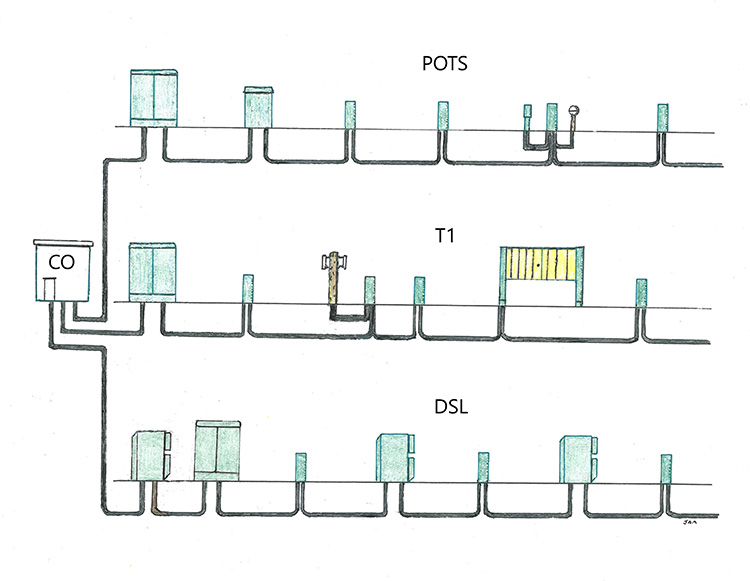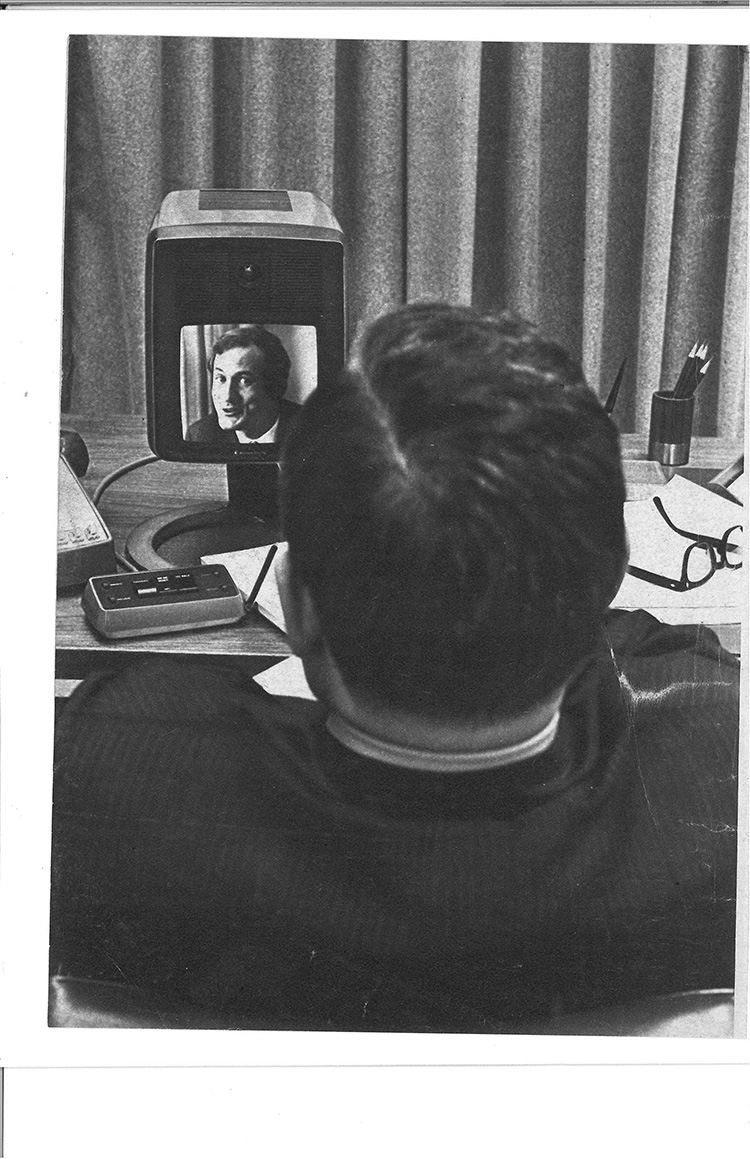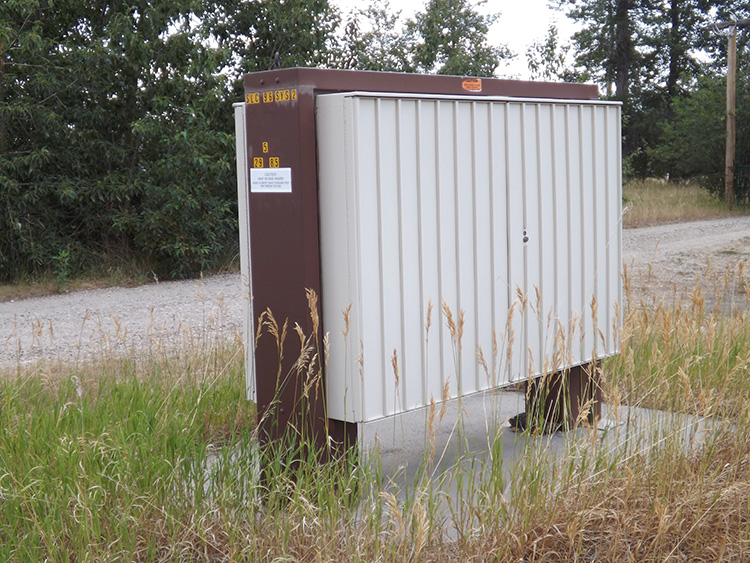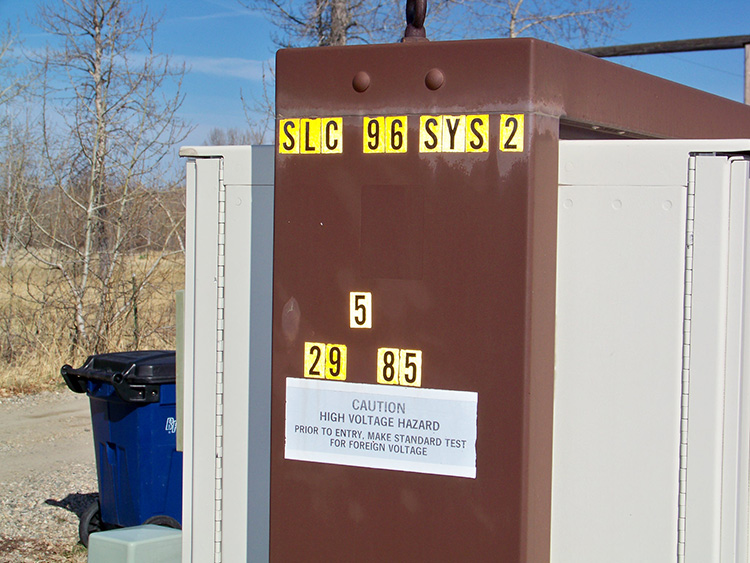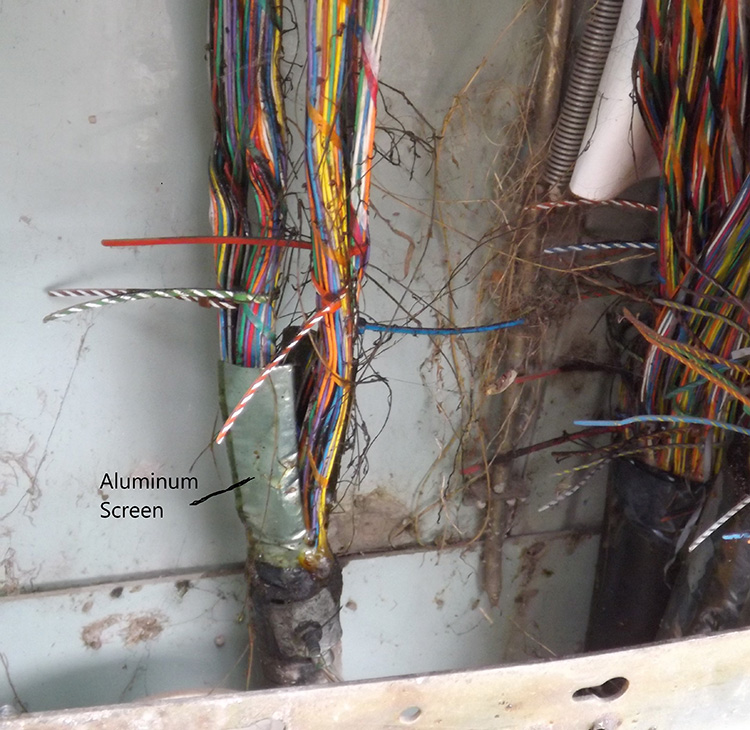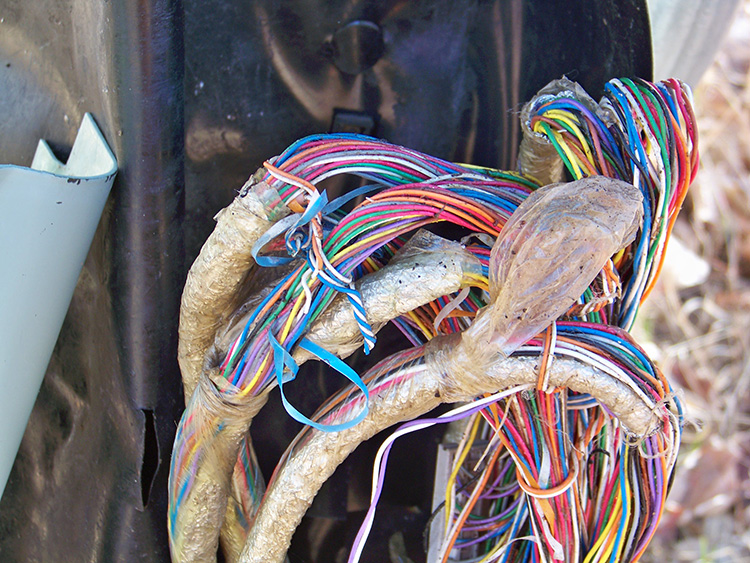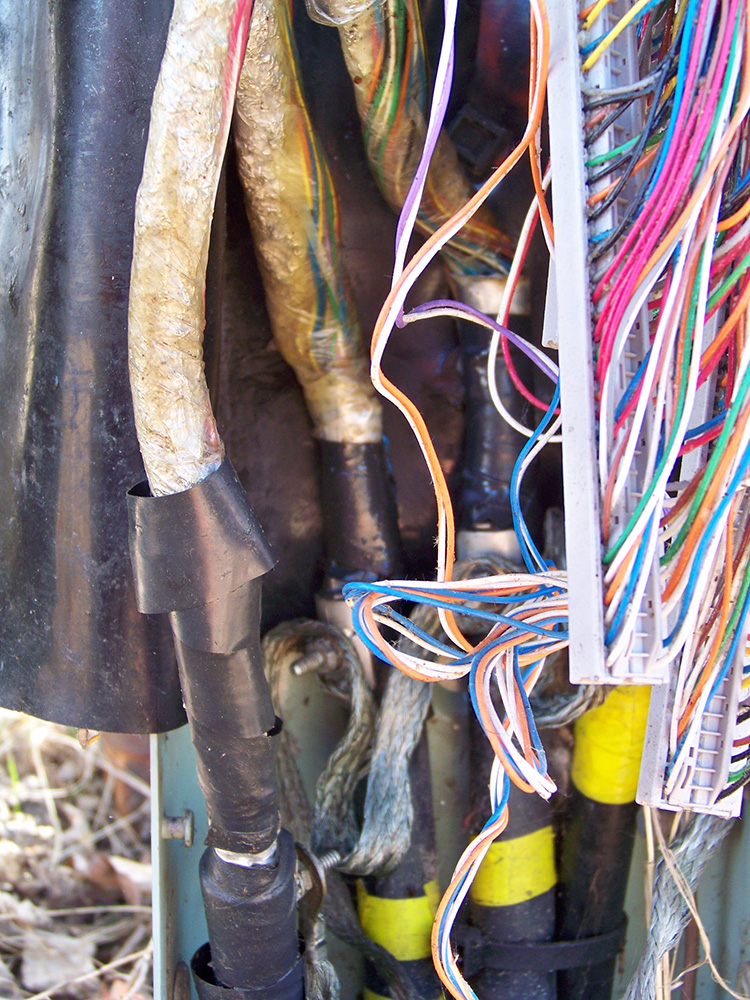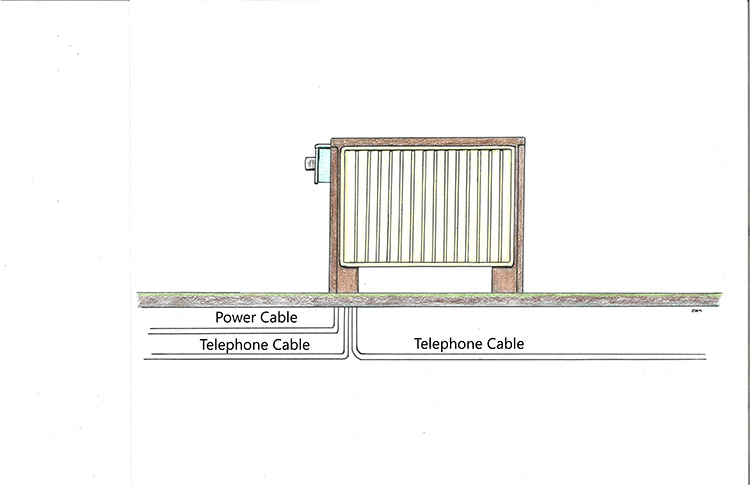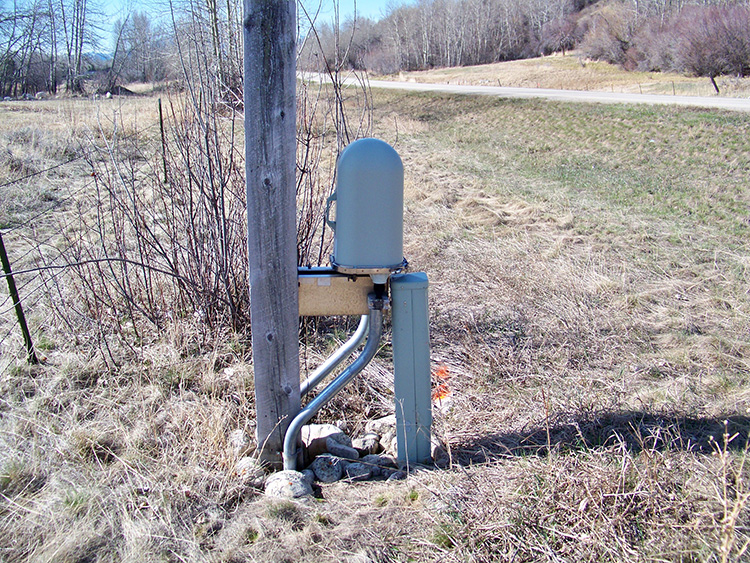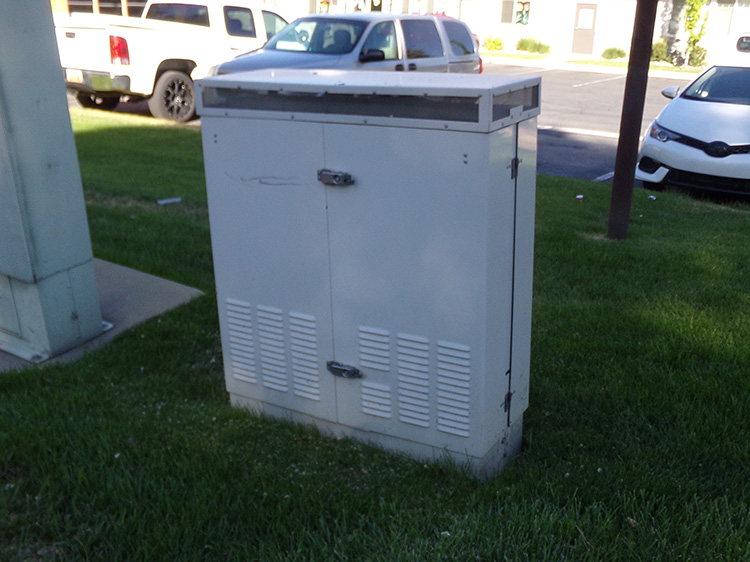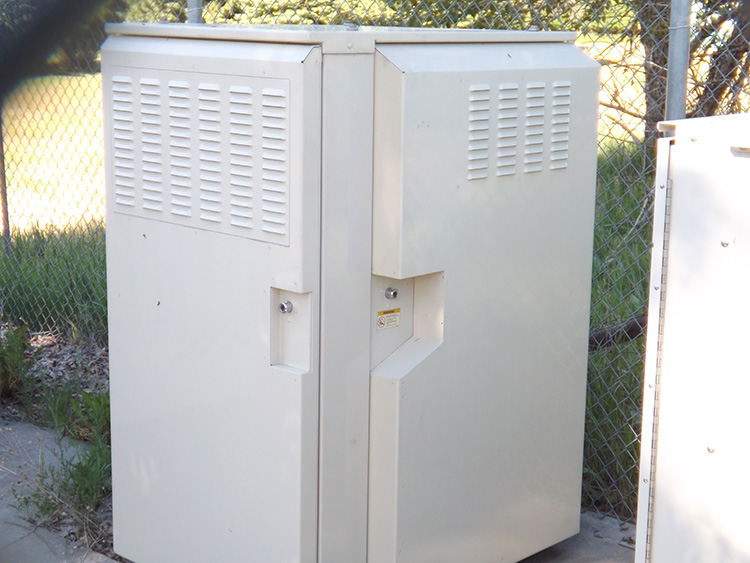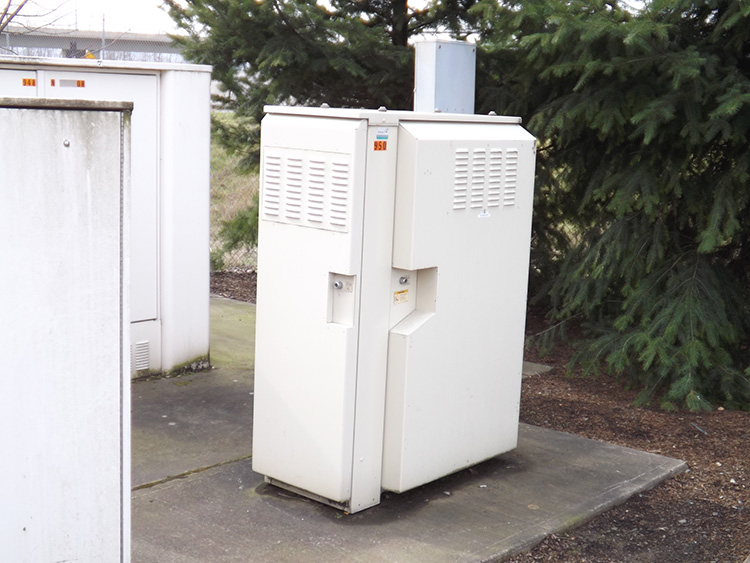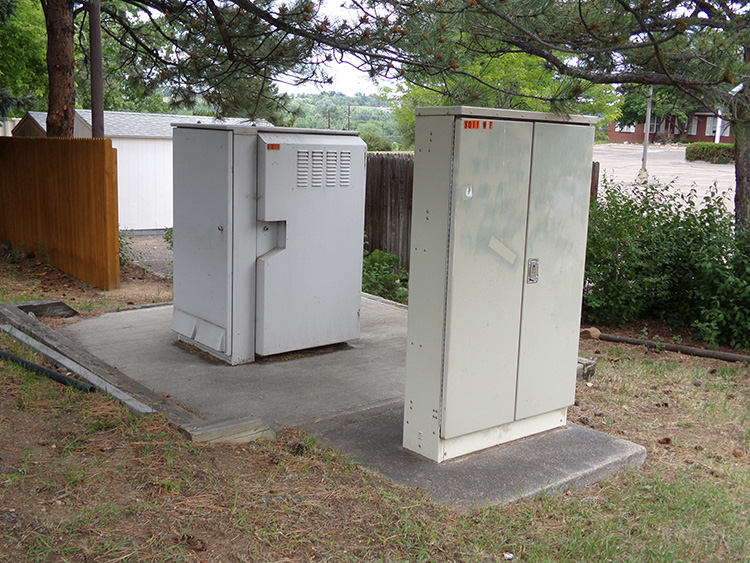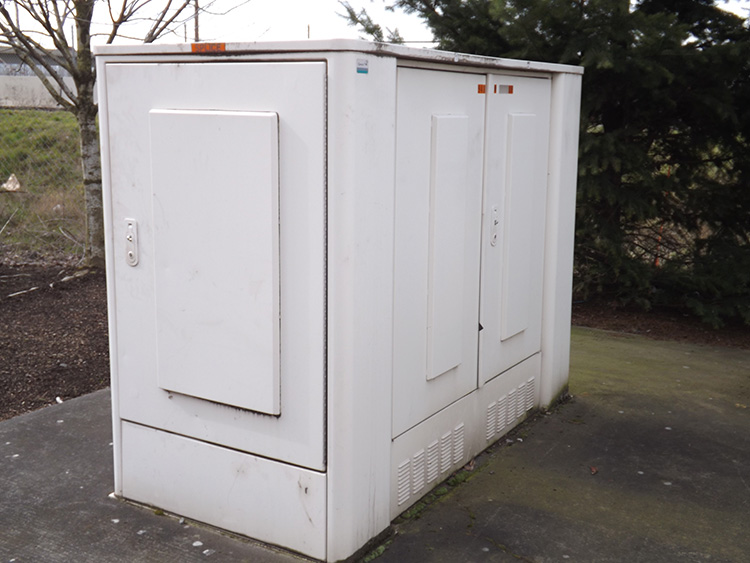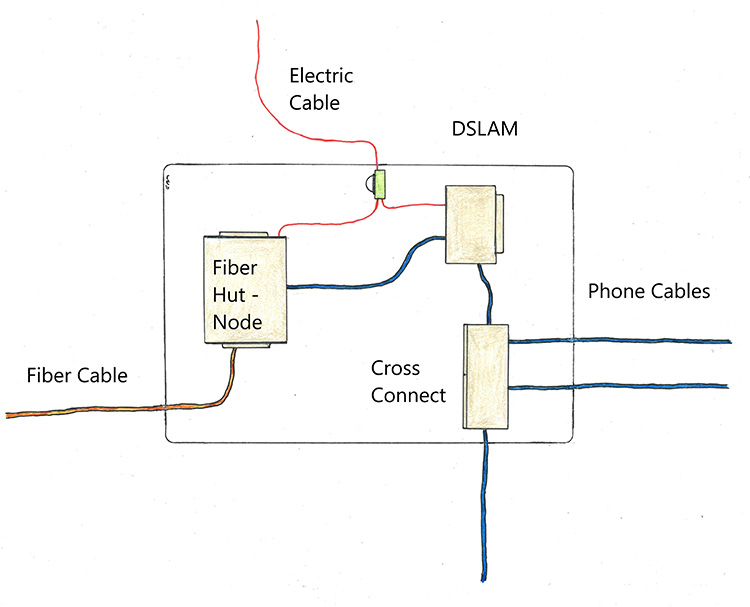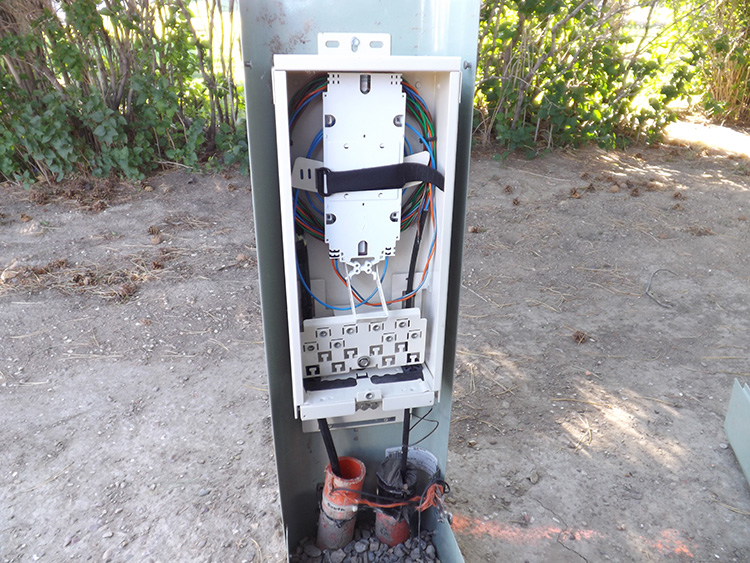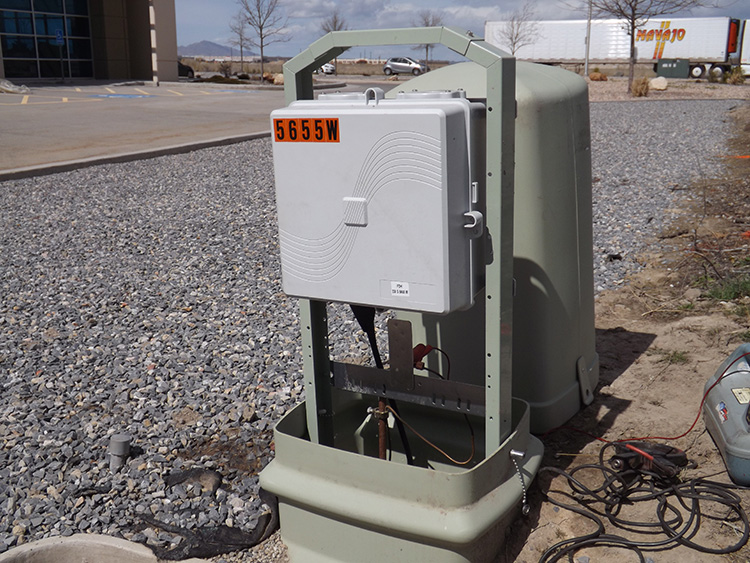From aboveground they appear as a smooth-topped metal structure, typically only about two feet high, and usually with vented panels on the sides. This is only the lid of the CEV which is itself completely contained underground. The telco technician uses a key to unlock the CEV, and since the cabinets already have an AC power supply, that electric power is also used to raise the lid up from the ground, expose the inside of the structure, where the technician can now step down inside the structure with full access to the electronics.
SUMMARY
Although these systems have been looked at individually, they are usually operating in conjunction with each other, especially with FTTx and DSL. Consider an imaginary scenario here.
You are living in a house that was constructed in 1965. All of the telephone cables from the Central Office 10 lineal miles away were placed the same year, as was the single pair telephone service to your house.
From the CO through the duct runs manhole after manhole, then out to the cross connect, pedestal after pedestal, as well as repeaters and load coils, and finally the service buried in your yard. It was all placed in 1965.
You still have that phone service to your house, but nothing else. But the Cable TV operator in the neighborhood is offering far more services than the Telco can. They have high-speed internet and Cable TV, and the cellular phone companies are taking away the last of your telephone business.
So, the Telco pushes fiber cable though empty conduits in the duct runs, and that old phone cable in the duct run is abandoned. The fiber cable now exits the duct run and connects in to a new fiber hut.
At the same place where the fiber hut is installed, there is also the first DSL cabinet. Between that point and your house, other DSLAMs are placed. Load coils and repeaters are removed, as well as some pedestals, and DSLAMs are installed.
Theoretically, not a single communication cable had to be trenched or bored into the ground at any point between the CO and your house. No open trenches or open pits, no diverted traffic or traffic control, no construction permits or traffic control permits, no trucks hauling in new cable or hauling out dirt. Even the old telephone service to your house did not need to be replaced.
There was no major excavation that ever took place. Yet now you have high-speed internet, Cable TV, and you still have telephone service as well, so now you decide to stick with the Telco for your communication needs. You now have 21st century communication. The telephone cable portion is now DSL, and the overall communication layout is Fiber To The Node – FTTN.
The only other important item here is the cross connect. All telephone cables must connect in with a cross connect cabinet, and almost always at the point where the cables come out of the duct run and run pedestal to pedestal. This is the crossover between feeder lines and distribution lines.


